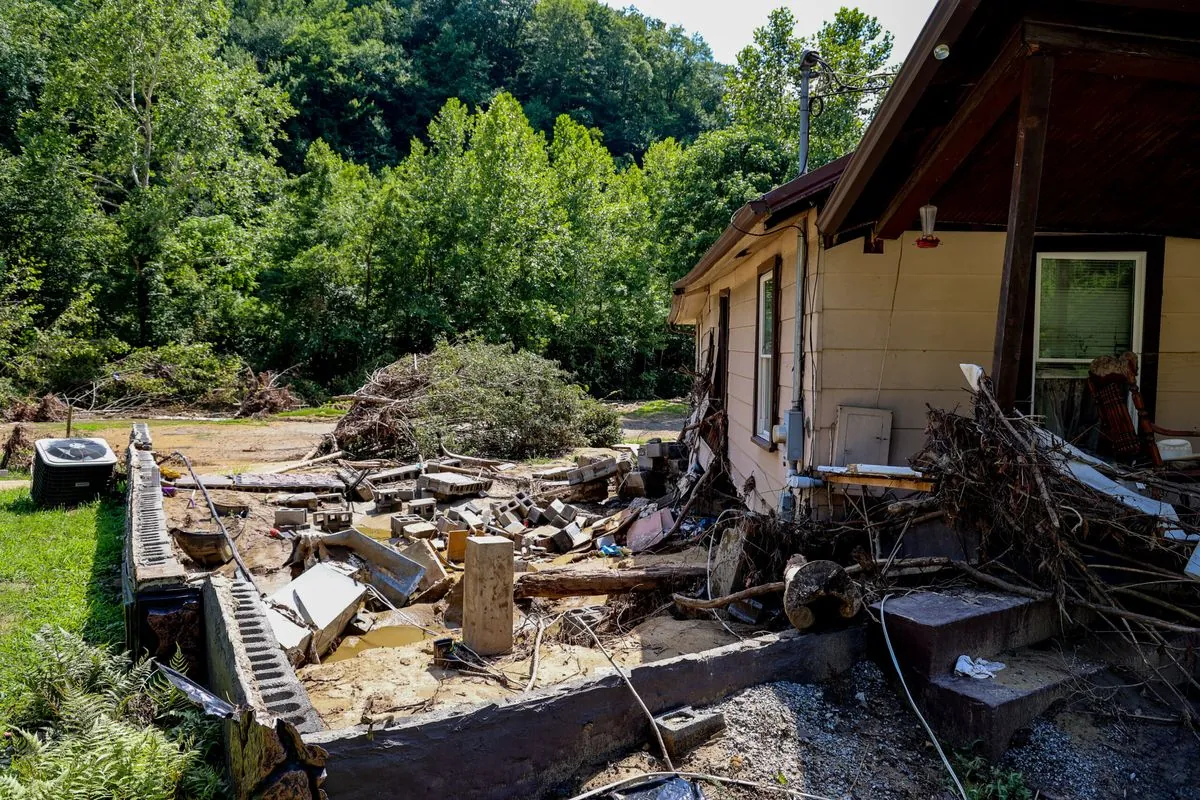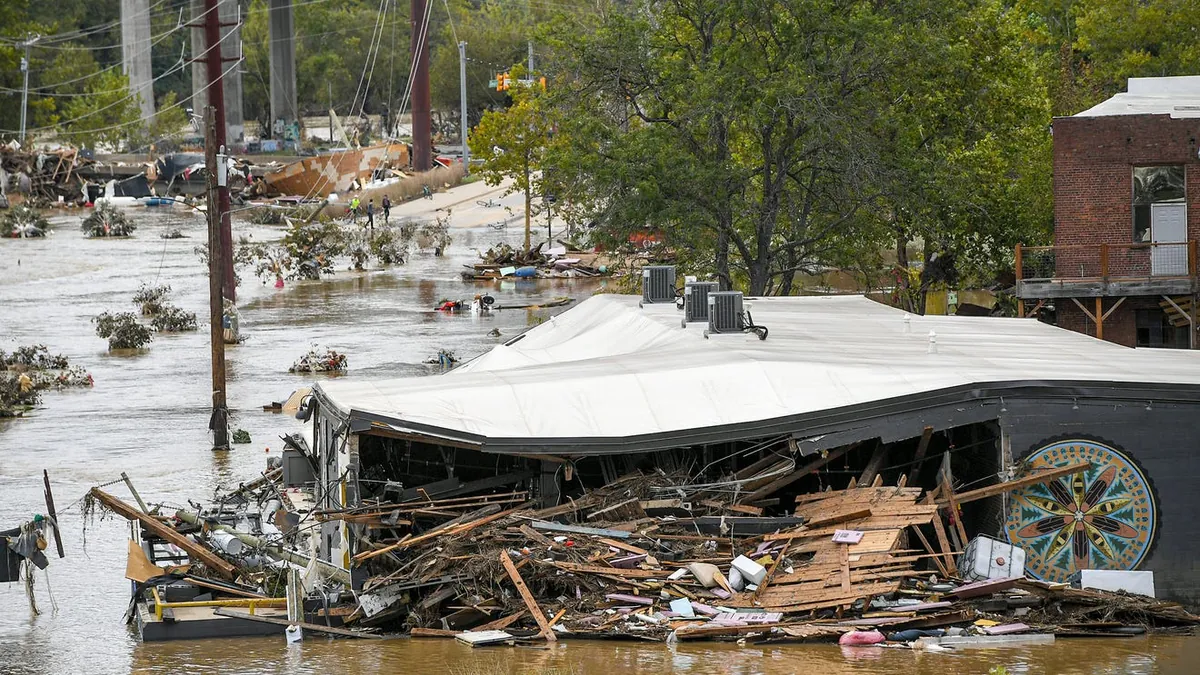Inland Devastation: Hurricane Helene's Unexpected Impact on Appalachia
Hurricane Helene wreaks havoc in Appalachian communities, challenging perceptions of inland flood risks. The disaster highlights vulnerabilities in mountainous regions and limitations in current flood risk assessments.

Hurricane Helene has brought unprecedented devastation to inland communities in the Appalachian region, challenging long-held perceptions about flood risks in mountainous areas. The storm's impact on towns nestled in the Blue Ridge Mountains has exposed vulnerabilities that many residents and officials had not anticipated.
The Appalachian Mountains, formed approximately 480 million years ago, are among the world's oldest mountain ranges. Despite their ancient geology, these mountains are now facing new threats from extreme weather events. Hurricane Helene dumped massive amounts of rainfall on the region, causing severe flooding in areas far from coastal storm surge concerns.
Jeremy Porter, head of climate implication research at First Street, noted the unexpected nature of this disaster: "We almost always associate flood risk with hurricanes and coastal storm surge in Florida, Louisiana and Texas. We don't think of western North Carolina and the Appalachian mountains as an area that has significant flood risk."
The Blue Ridge Mountains, a physiographic province of the larger Appalachian range, were particularly hard hit. Asheville, known as the "Land of the Sky," faced significant challenges, with officials warning that restoring drinking water could take weeks. The region's distinctive blue haze, caused by isoprene released by trees, was temporarily replaced by muddy floodwaters.

This event has highlighted the phenomenon of orographic lift, where mountainous terrain enhances rainfall. The steep valleys and narrow gorges of the Appalachians, which typically contribute to the region's scenic beauty, became conduits for destructive floodwaters.
The disaster has drawn parallels to historical flooding events. In 1916, two hurricanes within a week caused significant flooding in western North Carolina, resulting in at least 80 fatalities. More recently, in 2004, Hurricane Ivan led to deadly debris flows in the region.
Climate change may be exacerbating these risks. Scientists suggest that global warming is contributing to more intense rainfall during hurricanes. Jim Smith, a hydrologist at Princeton University, explained that while the mountainous terrain complicates the interaction between weather events and climate change, the warming atmosphere can hold more water, fueling intense rainstorms.
The Blue Ridge Parkway, a 469-mile scenic highway running through the mountains, and the Appalachian Trail, a 2,190-mile hiking path, may face long-term impacts from such extreme weather events. These landmarks, along with the Great Smoky Mountains National Park, are crucial to the region's tourism industry and ecological balance.
Local communities are grappling with the aftermath. Dave Marshall, executive pastor at First Baptist Church in Hendersonville, North Carolina, expressed shock at the storm's destruction: "Nobody was prepared. We are shocked and devastated. Everybody knows a friend or family member that has lost a loved one."
The disaster has also raised questions about the adequacy of current flood risk assessment tools. Porter pointed out limitations in FEMA's flood maps, which may underestimate flood risk in certain areas, particularly in parts of Appalachia. FEMA spokesperson Daniel Llargues emphasized that flood maps are not predictive tools but are used for planning and insurance purposes.
As the region begins its recovery, the event serves as a stark reminder of the complex interplay between climate change, topography, and extreme weather events. The Appalachian Mountains, with their rich biodiversity, underground water systems, and crucial role in the Eastern United States' watershed, face new challenges in an era of changing climate patterns.
"Flooding from the hurricane could be 'one of the most significant weather events to happen' since 1916."
This disaster underscores the need for improved risk assessment, preparedness, and resilience strategies in regions not traditionally associated with hurricane-related flooding. As climate change continues to alter weather patterns, communities in mountainous areas may need to reassess their vulnerability to such extreme events.


































